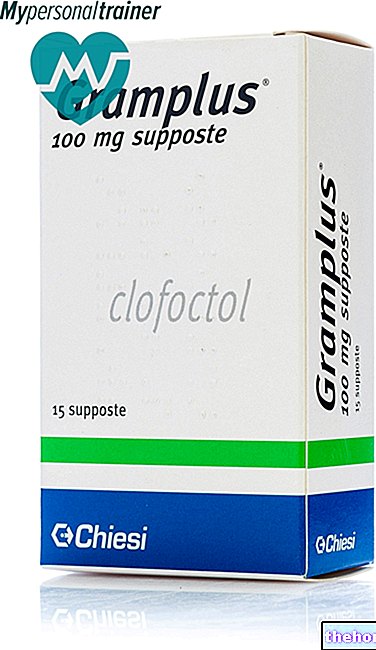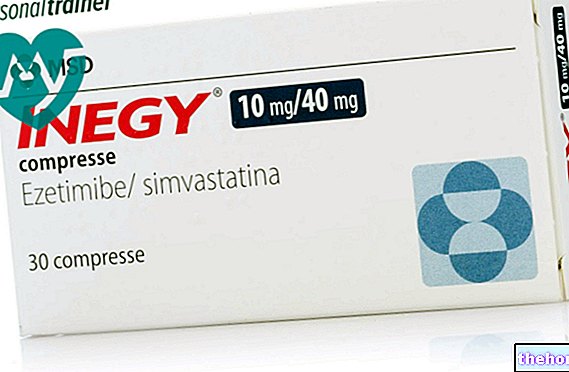Active ingredients: Phenobarbital
Luminale® 200 mg / ml solution for injection for intramuscular use
Luminale® 100 mg tablets
Luminale package inserts are available for packs: - Luminale® 200 mg / ml solution for injection for intramuscular use, Luminale® 100 mg tablets
- Luminale® 15 mg tablets
Indications Why is Luminale used? What is it for?
Pharmacotherapeutic group
Barbiturates
Therapeutic indications
Luminale® is mainly indicated as a general sedative, with particular regard to epilepsy and all conditions that require long-lasting sedation. Luminale® is particularly useful in focal epilepsy and grand mal. It can be used as a hypnotic and in the detoxification of chronic barbiturism.
Contraindications When Luminale should not be used
Hypersensitivity to barbiturates, porphyria, renal and hepatic insufficiency, severe heart disease, acute intoxication from alcohol, analgesics, hypnotics.
Precautions for use What you need to know before taking Luminale
Phenobarbital can be addictive. Continued therapy induces the formation of liver enzymes that accelerate the metabolism of certain drugs, such as anticoagulants, some antibiotics, adrenal steroids, etc.
Hypericum perforatum preparations should not be taken concomitantly with phenobarbital containing medicinal products due to the risk of decreased plasma levels and decreased therapeutic efficacy of phenobarbital (see Interactions).
Abrupt discontinuation of treatment in epileptic patients can induce a status epilepticus.
Patients who may become pregnant or are of childbearing age should be given specialist advice.
The need for antiepileptic treatment should be re-evaluated when the patient plans to become pregnant.
The risk of congenital defects is increased by a factor of 2 to 3 times in the offspring of mothers treated with an antiepileptic, the most frequently reported being cleft lip, cardiovascular malformations and neural tube defects.
Polytherapy with antiepileptic drugs may be associated with a higher risk of congenital malformations than monotherapy. Therefore it is important that monotherapy is practiced whenever possible. Abrupt discontinuation of antiepileptic therapy should not be practiced due to the danger of a resumption of seizures which could have serious consequences for both mother and baby.
Life-threatening skin rashes (Stevens-Johnson syndrome, toxic epidermal necrolysis) have been reported with the use of Luminale, these initially appear as round red spots or circular patches often accompanied by blisters in the central part of the trunk.
Additional signs to note include ulcers in the mouth, throat, nose, genitals and conjunctivitis (red and swollen eyes)
These life-threatening rashes are often accompanied by flu-like symptoms. The rash may progress to the development of widespread blistering or peeling of the skin.
The highest risk of severe skin reactions occurs in the first 8 weeks of treatment.
If you have developed Stevens-Johnson syndrome or toxic epidermal necrolysis, with the use of Luminale, the Luminale should no longer be used.
If you develop a skin rash or these skin symptoms, stop taking Luminale, consult a doctor urgently and inform him that you are taking this drug.
Interactions Which drugs or foods can modify the effect of Luminale
The efficacy of phenobarbital may be reduced by the simultaneous administration of Hypericum perforatum-based preparations. This is due to the induction of the enzymes responsible for drug metabolism by Hypericum perforatum-based preparations which therefore should not be administered concomitantly with phenobarbital. The induction effect may persist for at least 2 weeks after stopping treatment with Hypericum perforatum products. If a patient is taking Hypericum perforatum products at the same time, blood phenobarbital levels should be monitored and therapy with Hypericum perforatum products discontinued. Blood phenobarbital levels may increase with stopping Hypericum perforatum. The phenobarbital dosage may need to be adjusted.
The effect of alcohol is enhanced and the intake of alcoholic beverages should be limited. The combination with other psychotropic drugs and antihistamines requires particular caution and vigilance on the part of the physician to avoid unexpected undesirable effects from interaction.
Warnings It is important to know that:
The treatment with phenobarbital reduces attention and lengthens the time of reflexes: patients must be warned of this so that they avoid driving vehicles or carrying out operations that require vigilance integrity due to their dangerousness.
A small number of patients being treated with antiepileptic drugs such as Luminale have developed thoughts of self-harm or suicide. Anytime such thoughts arise, contact your doctor immediately.
Dosage and method of use How to use Luminale: Dosage
- LUMINALE® 200 mg / ml solution for injection for intramuscular use, 200 mg / ml VIALS of phenobarbital (in the form of sodium salt 219 mg): unless otherwise prescribed by the doctor, in adults one ampoule per day intramuscularly. Do not exceed 400 mg in 24 hours. In children, 10 mg for each year of age from 1 year.
- LUMINALE® 100 mg tablets: as a sedative from 50 to 100 mg (half / one tablet) per day. As an anticonvulsant, in adults from 100 to 300 mg (1-3 tablets) per day in two - three times. In children, the doses should be reduced (from 100 to 20 mg) according to age and weight and the preparation Luminale ® 15 mg tablets is indicated.
In severe insomnia, 50 to 200 mg (half to 2 tablets) in the evening, one hour before bedtime. The tablets can be dissolved in a little water or possibly added to food. In the treatment of elderly patients, the posology must be carefully established by the physician who will have to evaluate a possible reduction of the dosages indicated above.
Overdose What to do if you have taken too much Luminale
Treatment of acute barbiturate intoxication involves immediate gastric lavage, if the patient's condition permits.
Removal of the already absorbed drug can be achieved with forced diuresis and alkalinization of the urine. In severe cases, hemodialysis is useful and breathing may need to be mechanically controlled. Antibiotic administration is necessary to avoid the onset of pulmonary complications.
Side Effects What are the side effects of Luminale
Cutaneous: rare skin allergic manifestations. Rare cases of erythema multiforme, Stevens-Johnson syndrome and toxic epidermal necrolysis (Lyell's syndrome) have been reported.
Hepatobiliary: rare cases of toxic hepatitis.
Haematological: rare cases of leukopenia, agranulocytosis, thrombocytopenia and purpura. Hypotrombinaemia sensitive to vitamin K therapy may occur in newborns of mothers treated with phenobarbital. During chronic treatments, folate-sensitive megaloblastic anemia and osteomalacia that responds to vitamin D treatment may arise.
Central nervous system: in some subjects they can occur rarely: excitement, agitation and delirium. Manifestations of hyperactivity may occur in pediatric patients. Sedation, ataxia, nystagmus and mental confusion may arise, especially in the elderly, following the administration of high doses.
Life-threatening skin rashes (Stevens-Johnson syndrome, toxic epidermal necrolysis) have been reported with the use of Luminale. Frequency: very rare
Cases of bone disease including osteopenia and osteoporosis (thinning of the bones) and fractures have been reported. Contact your doctor or pharmacist if you have been on antiepileptic medication for a long time, or if you have a history of osteoporosis, or if you are taking steroids.
The patient is invited to report to the attending physician the possible occurrence of undesirable effects not described.
Expiry and Retention
Warning: do not use the medicine after the expiry date indicated on the package.
Composition
1 vial contains:
Active ingredient: Phenobarbital (in the form of sodium salt 219 mg) 200 mg.
Excipients: propylene glycol, ethanol, water for injections.
1 tablet contains:
Active ingredient: Phenobarbital 100 mg.
Excipients: talc, povidone, stearic acid, corn starch.
Pharmaceutical form
- Box of 10 vials
- Box of 20 tablets
Source Package Leaflet: AIFA (Italian Medicines Agency). Content published in January 2016. The information present may not be up-to-date.
To have access to the most up-to-date version, it is advisable to access the AIFA (Italian Medicines Agency) website. Disclaimer and useful information.
01.0 NAME OF THE MEDICINAL PRODUCT
LUMINAL
02.0 QUALITATIVE AND QUANTITATIVE COMPOSITION
1 ampoule of 1 ml contains:
Active ingredient: PHENOBARBITAL (in the form of sodium salt 219 mg) 200 mg
1 tablet of 170 mg contains
Active ingredient: PHENOBARBITAL 100 mg
03.0 PHARMACEUTICAL FORM
- vials
- tablets
04.0 CLINICAL INFORMATION
04.1 Therapeutic indications
LUMINALE is mainly indicated as a general sedative, with particular regard to epilepsy and all conditions that require long-lasting sedation. LUMINALE is particularly useful in tonic-clonic seizures of grand mal and focal cortical convulsions. LUMINALE can also be used as a hypnotic.
04.2 Posology and method of administration
Luminale vials
Unless otherwise prescribed by the doctor, 1 ampoule per day intramuscularly in adults. Do not exceed 400 mg in 24 hours.
In children 10 mg for each year of age starting from the 1st year.
Luminale 100 mg tablets
As a sedative 50 to 100 mg (1 / 2-1 tablet) per day.
As an anticonvulsant in adults from 100 to 300 mg (1-3 tablets) per day in 2-3 times. In children the doses should be reduced (from 20 to 100 mg) according to age and weight and the preparation Luminale 15 mg tablets is indicated.
In severe insomnia, 50 to 200 mg (1/2 to 2 tablets) in the evening one hour before bedtime. The tablets can be dissolved in a little water or possibly added to food. In the treatment of elderly patients, the posology must be carefully established by the physician who will have to evaluate a possible reduction of the dosages indicated above.
04.3 Contraindications
Hypersensitivity to the active substance or to any of the excipients.
Porphyria, renal and hepatic insufficiency, severe heart disease, acute intoxication from alcohol, analgesics, hypnotics.
04.4 Special warnings and appropriate precautions for use
Phenobarbital can be addictive. Continued therapy induces the formation of liver enzymes that accelerate the metabolism of certain drugs, such as anticoagulants, some antibiotics, adrenal steroids, etc. Hypericum perforatum preparations should not be taken concomitantly with phenobarbital containing medicinal products due to the risk of decreased plasma levels and decreased therapeutic efficacy of phenobarbital (see Section 4.5 Interactions).
The effect of alcohol is enhanced and the intake of alcoholic beverages should be limited. The combination with other psychotropic drugs and antihistamines requires particular caution and vigilance on the part of the physician to avoid unexpected undesirable effects from interaction. Abrupt discontinuation of treatment in epileptic patients can induce a status epilepticus.
Cases of suicidal ideation and behavior have been reported in patients receiving antiepileptic drugs in their various indications. A meta-analysis of randomized clinical trials versus placebo also highlighted the presence of a modest increase in the risk of suicidal ideation and behavior.
The mechanism of this risk has not been established and the available data do not exclude the possibility of an increased risk with Luminale.
Therefore, patients should be monitored for signs of suicidal ideation and behavior and appropriate treatment should be considered if so. Patients (and caregivers) should be instructed to notify their treating physician if signs of suicidal ideation or behavior emerge.
The following life-threatening skin reactions have been reported with the use of Luminale: Stevens-Johnson syndrome (SJS) and toxic epidermal necrolysis (TEN).
Patients should be informed of the signs and symptoms and monitored closely for skin reactions. The highest risk of developing SJS and TEN occurs in the first 8 weeks of treatment.
If symptoms or signs of SJS or TEN occur (e.g. progressive skin rash often with blistering or mucosal lesions) treatment with Luminale should be discontinued.
The best results in the management of SJS and TEN are obtained with an early diagnosis and immediate discontinuation of therapy with any suspect drug. Early discontinuation is associated with a better prognosis.
If the patient has developed SJS or TEN with the use of Luminale, the Luminale should no longer be reused in this patient.
Keep out of the reach and sight of children.
See also point 4.6 and 4.7.
04.5 Interactions with other medicinal products and other forms of interaction
The efficacy of phenobarbital may be reduced by the simultaneous administration of Hypericum perforatum-based preparations. This is due to the induction of the enzymes responsible for drug metabolism by Hypericum perforatum-based preparations which therefore should not be administered concomitantly with phenobarbital. The induction effect may persist for at least 2 weeks after stopping treatment with Hypericum perforatum products. If a patient is taking Hypericum perforatum products at the same time, blood phenobarbital levels should be monitored and therapy with Hypericum perforatum products discontinued. Blood phenobarbital levels may increase with stopping Hypericum perforatum. The phenobarbital dosage may need to be adjusted.
See point 4.4
04.6 Pregnancy and lactation
Patients who may become pregnant or are of childbearing age should be given specialist advice.
The need for antiepileptic treatment should be re-evaluated when the patient plans to become pregnant.
The risk of congenital defects is increased by a factor of 2 to 3 times in the offspring of mothers treated with an antiepileptic, the most frequently reported being cleft lip, cardiovascular malformations and neural tube defects.
Polytherapy with antiepileptic drugs may be associated with a higher risk of congenital malformations than monotherapy. Therefore it is important that monotherapy is practiced whenever possible.
Abrupt discontinuation of antiepileptic therapy should not be practiced due to the danger of a resumption of seizures which could have serious consequences for both mother and baby.
04.7 Effects on ability to drive and use machines
The treatment with phenobarbital reduces attention and lengthens the time of reflexes: patients must be warned of this so that they avoid driving vehicles or carrying out operations that require vigilance integrity due to their dangerousness.
04.8 Undesirable effects
Cutaneous: rare skin allergic manifestations. Rare cases of erythema multiforme, Stevens-Johnson syndrome and toxic epidermal necrolysis (Lyell's syndrome) have been reported.
Hepatobiliary: rare cases of toxic hepatitis.
Haematological: rare cases of leukopenia, agranulocytosis, thrombocytopenia and purpura. Hypotrombinaemia sensitive to vitamin K therapy may occur in newborns of mothers treated with phenobarbital.
During chronic treatments, folate-sensitive megaloblastic anemia and osteomalacia that responds to vitamin D treatment may arise.
Central nervous system: in some subjects they can occur rarely: excitement, agitation and delirium. Manifestations of hyperactivity may occur in pediatric patients.
Sedation, ataxia, nystagmus and mental confusion may arise, especially in the elderly, following the administration of high doses.
Serious cutaneous adverse reactions (SCARs) such as Steven-Johnoson syndrome (SJS) and toxic epidermal necrolysis (TEN) have been reported with the use of Luminale
Frequency: very rare
There have been reports of decreased bone mineral density, osteopenia, osteoporosis and fractures in patients on long-term therapy with Luminale. The mechanism by which Luminale affects bone metabolism has not been identified.
See also points 4.4 - 4.6 and 4.7
04.9 Overdose
The treatment of acute barbiturate intoxication involves immediate gastric lavage, if the patient's conditions permit. Removal of the drug already absorbed can be obtained with forced diuresis and alkalinization of the urine. In severe cases it is useful to resort to "hemodialysis and it may be necessary to mechanically control breathing. Administration of antibiotics is necessary to avoid the onset of pulmonary complications.
05.0 PHARMACOLOGICAL PROPERTIES
05.1 Pharmacodynamic properties
Phenobarbital is an effective hypnotic-sedative that acts primarily on the cerebral cortex, especially on the motor centers, raising the threshold of excitability and also on the neurovegetative centers of the brain stem. It also possesses spasmolytic properties that allow its use in spastic states in general.
05.2 Pharmacokinetic properties
Oral absorption of phenobarbital is complete but slow; peak plasma concentrations are determined several hours after a single dosing. Plasma protein binding is approximately 40-60% and is also of the same order of magnitude with other plasma proteins. tissues, including the brain. The volume of distribution is approximately 0.9 1 / kg. More than 25% phenobarbital is eliminated by pH-dependent renal excretion. The residual amount is inactivated by hepatic microsomal enzymes. The main metabolite, the parahydroxyphenyl derivative, is inactive and is excreted in the urine in part as a sulfate conjugate. The plasma half-life of phenobarbital is approximately 90 hours in adults and slightly shorter in children.
05.3 Preclinical safety data
The oral LD50 in the rat is 660 mg / kg, which is more than 100 times the recommended therapeutic dose.
06.0 PHARMACEUTICAL INFORMATION
06.1 Excipients
Luminale 200 mg solution for injection for intramuscular use
Excipients: Propylene glycol, Ethanol, Water p.p.i.
Luminale tablets
Excipients: Talc, Povidone, Stearic acid, Corn starch
06.2 Incompatibility
None known.
06.3 Period of validity
Luminale 200 mg / ml solution for injection for intramuscular use:
Validity: 2 years.
Luminale tablets
Validity: 5 years.
06.4 Special precautions for storage
Keep away from light.
The expiry date indicated refers to the product in intact packaging, correctly stored.
06.5 Nature of the immediate packaging and contents of the package
- 1 ml ampoules: type I colorless glass according to F.U. IX Ed. Box of 10 vials
- Tablets: blister (PVC-aluminum coupled) opaque. Box of 20 tablets
06.6 Instructions for use and handling
Nothing to report.
07.0 MARKETING AUTHORIZATION HOLDER
BRACCO S.p.A. via E. Folli, 50 - Milan
08.0 MARKETING AUTHORIZATION NUMBER
Luminale 200 mg / ml solution for injection for intramuscular use - AIC 002860017
Luminale tablets - AIC 002860031
09.0 DATE OF FIRST AUTHORIZATION OR RENEWAL OF THE AUTHORIZATION
Luminale 200 mg / ml solution for injection for intramuscular use 12.07.1950 / 01.06.2005
Luminale tablets - 16.10.1967 / 01.06.2010
10.0 DATE OF REVISION OF THE TEXT
June 2012




























